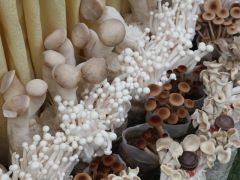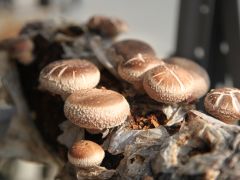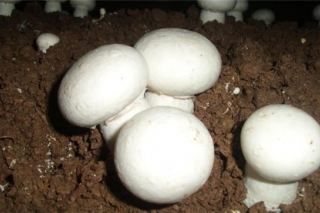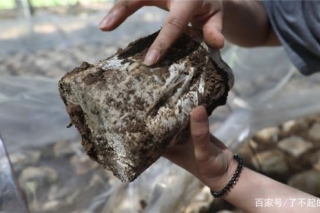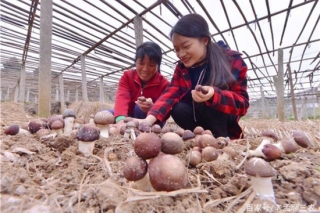TI: Host feeding, damage and control of the mushroom pest, Brennandania lambi (Acari: Pygmephoridea) in China.
AU: Wu-J; Zhang-ZQ
SO: Experimental-and-Applied-Acarology. 1993, 17: 3, 233-240; 10 ref.
LA: English
AB: The pygmephorid Brennandania lambi is the most serious mite pest of mushroom production in Shanghai, China. In laboratory studies, B. lambi could not develop and reproduce on the mycelia of Lentinus [Lentinula] edodes, Flammulina velutipes, Pleurotus ostreatus or P. sajor-caju, but 12-20% of the females survived 15 to 31 days on these hosts, whereas all mites died after 8 days in the absence of food. When fed the mycelia of Auricularia polytricha, adults of B. lambi became gravid and reproduced, but active larvae failed to develop to the next stage. B. lambi developed and reproduced on the mycelia of A. auricula, Hericium erinaceus, Tremella fuciformis and Agaricus bisporus [mushrooms]. Mobile stages of B. lambi damaged mushroom by feeding on its mycelia. Field surveys of mite damage during 1983-1989 in the suburbs of Shanghai revealed that contaminated spawn was the major source of the mite problem and losses averaged between 10 and 20%. Experiments on the effects of temperature on mite survival indicated that exposing B. lambi to 50C for 1 h or -10C for 24 h killed all stages. It is concluded that heating during well-executed phase II composting and freezing of mushroom spawn at -10C for 24 h should eliminate or at least reduce the damage to mushrooms by this pest.
GE: China-; Shanghai-; East-Asia
PT: Journal-article
AN: 941100192
TI: Preliminary studies on the biology of the pest mite Luciaphorus auriculariae (Acari: Pygmephoridae) infesting Jew's ear mushroom Auricularia polytricha in China.
AU: Zou-P; Gao-JR; Ma-EP
SO: Experimental-and-Applied-Acarology. 1993, 17: 3, 225-232; 2 ref.
LA: English
AB: The pygmephorid Luciaphorus auriculariae, recently discovered in Fujian Province, China, is regarded as a destructive mite to the commercial production of Auricularia polytricha, causing a 10-50% total loss of the crop. There are only 2 phases in the life cycle of L. auriculariae. Eggs develop directly into adults within the physogastric hysterosoma of the female. Mating takes place both within and outside of the hysterosoma and lasts 7-12 seconds. Under normal conditions, a male mates up to 20 times, but a female only once. When the hysterosoma bursts, fertilized females disperse rapidly in search of food. As soon as a favourable location is found, they project their gnathosomas and their hysterosomas begin to swell. At controlled temperatures of 20, 25, 30 and 35C, the egg phase lasted 13.6 ?3.2, 6.6 ?0.6, 4.5 ?0.8 and 3.0 ?0.9 days, resp.; the adult phase, 26.6 ?4.3, 12.6 ?2.2, 8.8 ?0.2 and 7.0 ?0.7 days; and the progeny totalled 125.4 ?90.1, 128.1 ?119.1, 163.9 ?92.1 and 77.3 ?81.5. Laboratory tests showed that in the course of normal development and reproduction, L. auriculariae can feed on both the mycelia and sporophores of A. polytricha, A. auricula and Flammulina velutipes, but not on the mycelia of Agaricus bisporus [mushrooms], Pleurotus ostreatus, Tremella fuciformis or Lentinus edodes, or the sporophores of L. edodes. When living conditions become unfavourable, the walls of the physogastric hysterosoma harden and form a crust around the cavity, delaying further egg development and protecting newly emerged adults.
GE: China-; Fujian-; East-Asia
PT: Journal-article
AN: 941100191






